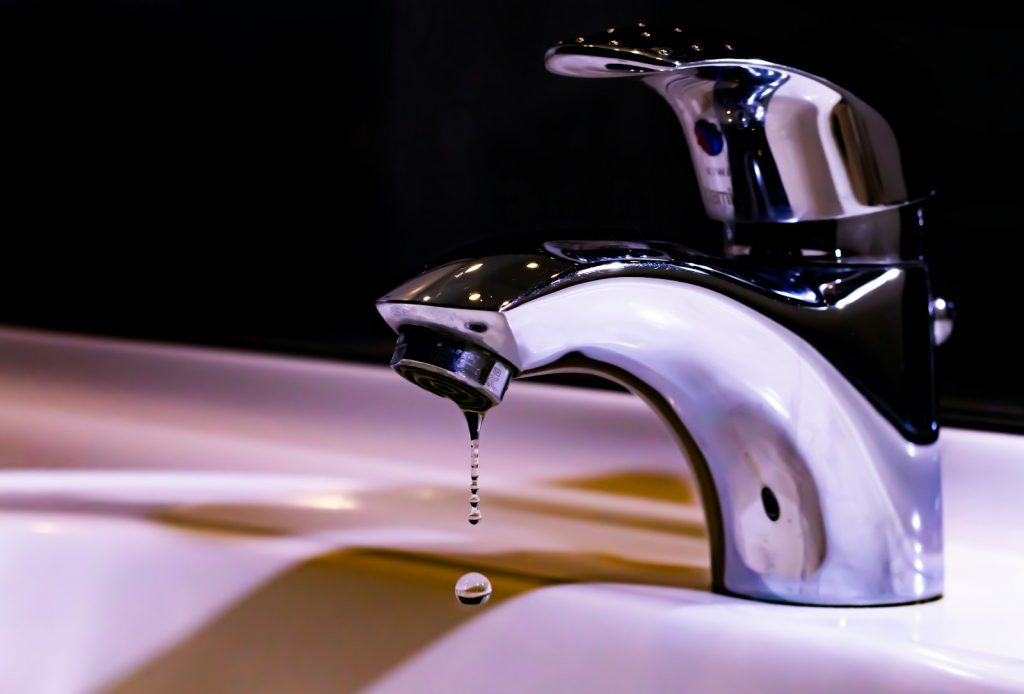How can technology enhance the efficiency of water resource management?

Technology is transforming the landscape of water resource management, offering innovative solutions that optimize efficiency and sustainability. From real-time monitoring systems to smart irrigation technologies, the integration of advanced tools enables water managers to enhance operational effectiveness, conserve resources, and support environmental stewardship. Efficient management of water resources is more critical than ever as global populations grow and climate change impacts water availability. Technology offers a beacon of hope for tackling these challenges head-on, providing tools that not only improve water management practices but also promote more sustainable and equitable use of this precious resource. Advanced monitoring systems are at the forefront of this technological revolution. By providing accurate, real-time data, these systems empower water managers with the information they need to make informed decisions. Let’s delve deeper into the various technologies that are reshaping water resource management and explore practical ways they can be implemented.
Advanced Monitoring Systems
At the heart of efficient water management lies the ability to monitor resources accurately and in real-time. Advanced monitoring systems employ IoT (Internet of Things) devices that collect vast amounts of data on water usage, quality, and availability. For instance, smart meters installed in households and industries can provide detailed insights into consumption patterns, helping identify areas where water use can be reduced.
IoT Devices and Smart Meters
IoT devices are transforming traditional water meters into smart meters that offer granular data on water consumption. These devices can be installed in residential, commercial, and industrial settings, offering a comprehensive view of water use across different sectors. The data collected by smart meters can be analyzed to identify inefficiencies and optimize water distribution.
Practical Tip: Water utilities can implement tiered pricing systems based on data from smart meters, encouraging users to conserve water by charging higher rates for excessive consumption. This approach not only incentivizes conservation but also generates additional revenue that can be reinvested in infrastructure improvements.
Case Study: Singapore’s Smart Water Grid Singapore has implemented a smart water grid that uses sensors and analytics to monitor its water distribution network. This system promptly identifies leaks and discrepancies in water flow, enabling quick interventions. As a result, the city-state has significantly reduced its water loss and improved resource allocation.
The Role of Data Analytics
Data collected from monitoring systems is only valuable if it can be effectively analyzed and interpreted. Advanced data analytics tools can process large datasets, identifying patterns and trends that might not be immediately apparent. This capability allows water managers to anticipate potential issues and address them proactively.
Real-World Application: In California, water agencies use data analytics to predict drought conditions and manage water allocations during dry periods. By analyzing historical weather data and current usage patterns, these agencies can make informed decisions about water rationing and conservation measures.
Smart Irrigation Systems
Agriculture is one of the largest consumers of water globally, making efficient irrigation crucial for sustainability. Smart irrigation systems leverage technology to optimize watering schedules, using weather forecasts, soil moisture sensors, and crop data. This precision agriculture approach ensures that crops receive the exact amount of water needed, minimizing waste.
Integration with Mobile Technology
Farmers can integrate smart irrigation systems with mobile apps to monitor and control water usage remotely. By setting specific thresholds for soil moisture, these systems can automatically adjust irrigation schedules, adapting to changing weather conditions. Mobile integration also allows farmers to receive alerts and updates, ensuring they can respond quickly to any issues that arise.
Practical Tip: Consider using a mobile app that provides real-time weather updates and forecasts. This information can be integrated with irrigation systems to further refine watering schedules, ensuring that crops are not over- or under-watered during unexpected weather changes.
Example of Successful Implementation: In Israel, a country known for its innovative water management techniques, farmers use smart irrigation systems that incorporate satellite data and mobile technology. These systems have significantly reduced water usage while maintaining or even improving crop yields.
Water Quality Monitoring
Maintaining high water quality is vital for public health and ecosystem integrity. Advanced sensors can continuously measure parameters such as pH, turbidity, and contaminant levels. These data points help authorities swiftly identify and address pollution sources, protecting both human populations and wildlife.
The Importance of Continuous Monitoring
Continuous monitoring is crucial for maintaining water quality, as it allows for the early detection of potential contaminants. By using automated sensors that provide constant data streams, water managers can identify changes in water quality and take corrective action before problems escalate.
Real-World Example: In Flint, Michigan, the water crisis underscored the importance of robust water quality monitoring. The implementation of advanced sensors could have provided earlier warnings about lead contamination, prompting faster action and reducing harm.
Addressing Pollution Sources
Identifying pollution sources is only the first step; effective water management also requires strategies for addressing these sources. This might involve stricter enforcement of environmental regulations, investment in pollution control technologies, or community education initiatives aimed at reducing pollution at the source.
Collaborative Approach: Engaging local communities in water quality monitoring efforts can enhance data collection and foster a sense of ownership and responsibility. Community-led initiatives can be a powerful tool for promoting sustainable practices and reducing pollution.
Remote Sensing and Data Analytics
Remote sensing technology, including satellite imagery and drones, provides a macro view of water resources. This bird’s-eye perspective is invaluable for assessing water availability, detecting illegal water diversions, and monitoring land-use changes that impact water systems.
Satellite Imagery and Drones
Satellite imagery offers a powerful tool for monitoring large-scale water systems, such as river basins and watershed areas. Drones, on the other hand, can provide more detailed, localized data, making them ideal for monitoring smaller water bodies or specific regions.
Data-Driven Insights: Using remote sensing, authorities can track changes in river courses, reservoir levels, and aquifer conditions over time. Data analytics further enhances this capability by identifying trends and predicting future water needs, facilitating proactive management strategies.
Practical Application: In Brazil, remote sensing is used to monitor the Amazon basin, providing critical data on water levels and deforestation impacts. This information is essential for managing water resources in a region that plays a vital role in the global water cycle.
Leak Detection and Repair
Water distribution networks are prone to leaks, which can result in significant water loss and financial costs. Advanced leak detection technologies, such as acoustic sensors and pressure monitoring devices, can identify leaks early, even in complex urban environments.
Acoustic Sensors and Pressure Monitoring
Acoustic sensors detect the sound of leaks in pipes, allowing for precise identification of leak locations. Pressure monitoring devices can identify drops in pressure that may indicate a leak, providing another layer of detection capability.
Implementation Example: The city of Sydney, Australia, employs acoustic leak detection to maintain its extensive water network. By integrating these systems with GIS (Geographic Information Systems), Sydney Water can prioritize repair efforts, enhancing efficiency and reducing water loss.
Cost-Benefit Analysis: While the initial investment in leak detection technology can be significant, the long-term savings from reduced water loss and avoided infrastructure damage often justify the expense. Water utilities should conduct a cost-benefit analysis to determine the most appropriate technologies for their specific needs.
Integrated Water Management Platforms
The complexity of managing water resources demands a cohesive approach. Integrated water management platforms bring together data from various sources, offering a comprehensive view that supports decision-making and collaboration among stakeholders.
Collaborative Solutions
Such platforms facilitate communication between government agencies, utilities, and communities. By sharing data and insights, stakeholders can develop coordinated strategies that address water scarcity, quality, and distribution challenges.
Example of Cross-Sector Collaboration: In the European Union, the Water Information System for Europe (WISE) provides a centralized platform for sharing water-related data among member states. This collaboration enhances the ability of countries to manage transboundary water resources and address shared challenges.
Benefits of Centralized Data Management
Centralized data management allows for more efficient resource allocation and planning. By having all relevant data in one place, water managers can quickly access the information they need to make informed decisions, reducing response times and improving outcomes.
Practical Tip: Water utilities and government agencies should invest in user-friendly platforms that facilitate data sharing and collaboration. Training staff on how to use these platforms effectively can further enhance their impact.
Emerging Technologies in Water Management
Blockchain for Water Transactions
Blockchain technology offers a secure and transparent method for managing water rights and transactions. By creating a decentralized ledger, water allocations can be tracked and verified, reducing disputes and enhancing trust among users.
Potential Applications: Blockchain could be used to facilitate water trading markets, where users can buy and sell water rights based on availability and demand. This system would promote more efficient water use and ensure that water is allocated to where it’s needed most.
Artificial Intelligence (AI) for Predictive Maintenance
AI algorithms can analyze data from sensors and predict when infrastructure maintenance is needed. This proactive approach minimizes downtime and extends the lifespan of water systems, ultimately saving costs and resources.
Real-World Example: In the Netherlands, AI is used to predict the maintenance needs of the country’s extensive network of dikes and canals. By anticipating maintenance requirements, water managers can prevent failures and ensure the continued safety and functionality of these critical structures.
Challenges and Considerations
While technology offers numerous benefits, its implementation in water management is not without challenges. Issues such as data privacy, the digital divide, and the cost of technology adoption can hinder progress. Addressing these challenges requires a balanced approach that considers local contexts and promotes equitable access to technology.
Data Privacy and Security
The collection and analysis of vast amounts of data raise concerns about privacy and security. Water utilities must ensure that data is protected from unauthorized access and breaches, which could have serious implications for both individuals and organizations.
Best Practice: Implement robust cybersecurity measures and ensure compliance with relevant data protection regulations. Regular audits and staff training can help maintain a high level of security and build trust with stakeholders.
Bridging the Digital Divide
Access to technology is not uniform, and some communities may lack the resources to implement advanced water management solutions. Bridging the digital divide is essential for ensuring that all regions can benefit from technological advancements.
Community Engagement: Engage with local communities to understand their specific needs and challenges. Tailor technology solutions to these contexts and provide training and support to ensure successful implementation.
Cost Considerations
The cost of implementing new technologies can be a significant barrier, particularly for smaller utilities or those in developing regions. Careful planning and prioritization are needed to ensure that resources are allocated effectively.
Funding Opportunities: Explore funding opportunities from government grants, international organizations, or private sector partnerships. These funds can help offset the costs of technology adoption and facilitate more widespread implementation.
Common Mistake to Avoid: Over-reliance on technology without adequate human oversight can lead to blind spots in water management. It’s crucial to combine technological tools with human expertise to interpret data accurately and make informed decisions. This balance ensures that technology enhances, rather than replaces, the valuable insights and judgment that experienced water managers bring to the table.
The integration of technology into water resource management is not just a trend but a necessity in an era of increasing demand and climate variability. By harnessing the power of advanced monitoring, smart irrigation, and data analytics, water managers can enhance efficiency, reduce waste, and promote sustainability. As we continue to innovate, the collaboration between technology and human expertise will be key to navigating the challenges and unlocking the full potential of our water resources.
